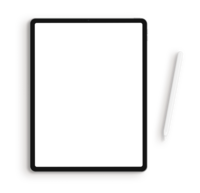I don’t want tips for creating new habits, I’d rather have everything snap perfectly into place. Everything organized. Everything works like clock work. My desk is clean. Work is wrapped-up exactly on-time. My body becomes accustomed to working out on schedule – even looking forward to a good sweat session.
The trouble is, a consistent routine crumbles to dust in the face of a turbulent schedule. One early morning meeting thrown into the week, and I’ll feel exhausted. It’s only natural to recover lost sleep the next day. Why deny my body the rest it needs for the sake of a ‘routine.’ Sound familiar?
Maybe you’ve struggled with one of these routine-building obstacles…
- You think you would thrive with more routine, but it’s challenging to adopt a routine.
- You feel like you let yourself down when you can’t keep up your perfect routine.
- You want to have a routine, but there are so many things on your plate that you’ve never managed to get through everything.
- You strategize great routines, but feel like it just takes time away from your real work.
For most of my life, I regarded routines as an all-or-nothing concept. I saw only two options: sticking to my perfect routine or running around panicked like a headless chicken.


Extending stay-at-home through May has me running around like that chicken. So I tried finding a new routine… and something strange happened. The more I tried to map out and strategize my perfect daily routine, the more I felt like I was pouring my effort into the wrong project. Anxiety started to squeeze around my chest. Why am I spending all this effort trying to think of a perfect routine? I could be using this time to get to work.
Maybe you have completely mastered the art of finding and adopting a daily routine from morning to night that works for you. Hats off to you!
For the rest of us, I’m willing to bet that as your life circumstances change and evolve, so do your routines. Instead of trying to engineer a perfect routine, what if you worked with what you had?
Building a tech start-up from the ground-up showed me the tremendous value of starting scrappy and small, testing our your ideas, and building momentum around what works. Not what looks perfect on paper.
Life is habit. Or rather life is a succession of habits.
– Samuel Beckett
If you’re also re-engineering your daily and weekly routines for a new pandemic-friendly lifestyle, let’s walk through an exercise to find one new habit that routine.
Step 1: What one shift would make a difference?
My biggest pain-point at the start of April was finding new time to strengthen my writing-habit. I knew that if I could get dedicate time to writing every day, I would feel more connected, centered, and accomplished at the end of the day. I used to write during my commute… so it was easy to slide off the writing bandwagon.
Step 2: What would it look like if this routine or habit were easy? What would it feel like?
Sometimes, I just don’t feel like writing. I get stuck, I don’t know where to start, I lose my train of thought. I don’t always feel as effective if I write in the afternoon when I’m tired or distracted. I might as well be banging my blurry-eyed face into the computer monitor. For me, it’s easier to focus in the morning. Then if I get writer’s block, I try again after work.
Step 3: What knowledge or resources would support you in this goal? Could you use a habit trigger?
Finding a habit trigger is an easy way to link your new habit onto an existing habit. Like a turbo-boost for flexing your new habit muscle. The idea is to identify an existing habit, and use it as a reminder to launch into the next habit. For my writing example, I can start writing after my usual habit of morning prayer.
Step 4: How can you stay accountable?
Researchers report that the time needed to instill a new habit differs based on the work involved. It usually takes 20-66 days to integrate a new habit into the brain’s autopilot-mode. Until then, having an accountability system helps you stay-on track. For my writing example, I set a concrete goal of passing the 600-word threshold. This goal is the start items at the top of my personal to-do list every day. It’s so satisfying when my hand hits the paper to draw that quick checkmark.
Am I 100% happy with my routines? Not really. But every day that I count every day of improvement – or learning from what went wildly wrong – a personal victory.


So that’s it! Have you found any new routines emerge in your stay-at-home time? Have you built any new habits? This week I’m starting a challenge to wake-up earlier (eek!). I can’t wait to let you know how it goes… and I hope you’ll share how your own routines are growing and unfolding














Be the first to comment